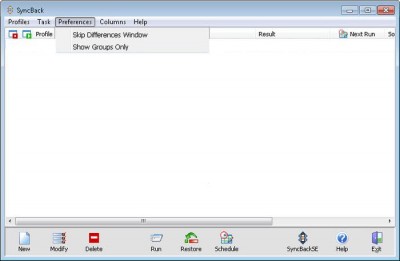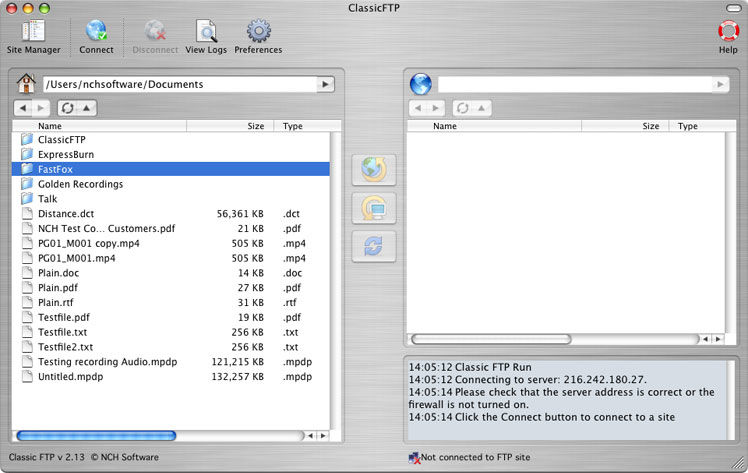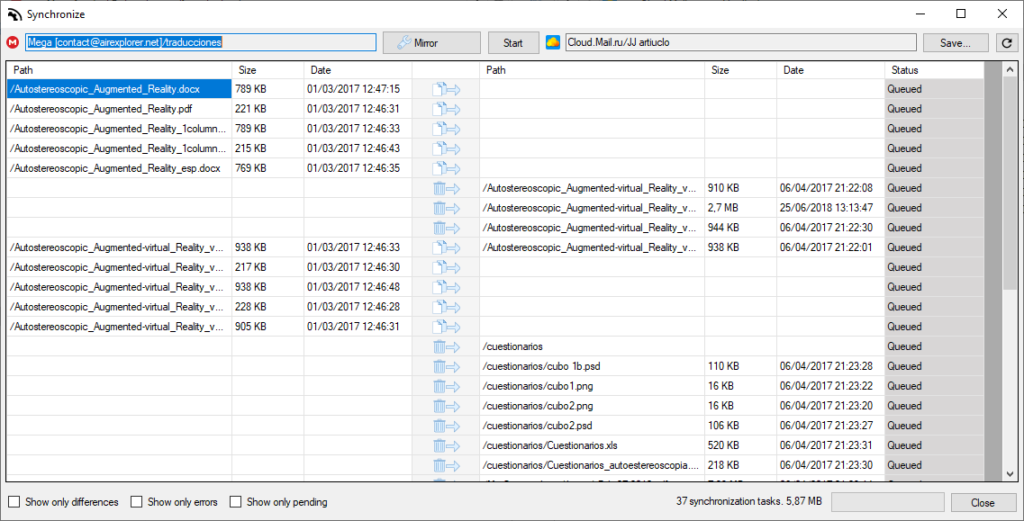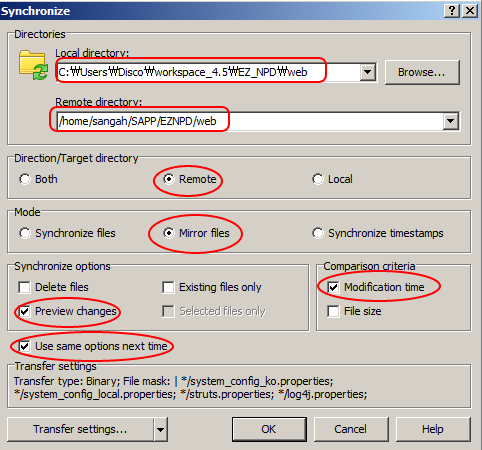
- Mirrorsync files on same server how to#
- Mirrorsync files on same server mac os x#
- Mirrorsync files on same server full#
- Mirrorsync files on same server pro#
- Mirrorsync files on same server software#
If you have FMS 17, you will need to use MirrorSync 6.12 or earlier. NOTE: Starting in MirrorSync 6.21, FileMaker Server 17 is no longer supported. FileMaker Cloud is supported, although it cannot support all MirrorSync features (See special instructions for syncing with FileMaker Cloud).
FileMaker Server 17 or later is required FileMaker Server 18v3 or later is recommended. Mirrorsync files on same server mac os x#
Windows Server 2012r2 or later / Mac OS X 10.12 or later / Linux running Tomcat 6 or 7.052 or later. In this configuration, MirrorSync should be set to sync fairly often, such as every 5-10 minutes. For instance, if you have an online storefront running with MySQL, Oracle, or DynamoDB at a remote data center, but you need to have instant access to all of the orders in a database running on FileMaker Server, MirrorSync can selectively sync certain SQL tables to FileMaker, even if the table and field names do not match. For integration with non-FileMaker databases, MirrorSync is the simplest and most efficient way to accomplish this. 
This means that each server only needs to work with 1/2 or less of the total users, and if one server goes down, the other server can take over the entire workload seamlessly. To maximize performance and reliability, MirrorSync can be used in a clustering configuration, where two or more servers are running at the same data center and synchronized bidirectionally so that they all contain the same set of data.In this configuration, MirrorSync should be set to sync very often, such as every 30-60 seconds.
Mirrorsync files on same server full#
Each workgroup works at full LAN speed on their own FileMaker Server, and MirrorSync uses a bidirectional sync to take care of keeping the servers in sync with each other, so that each workgroup can see and edit changes made by the other group.
For groups of users at multiple locations, MirrorSync should be used in server-to-server mode, where an identical copy of the database is installed on FileMaker Server in each location. In the event that the production server goes down or suffers database corruption, the backup server will be ready to immediately take over. By installing MirrorSync on two computers running FileMaker Server, you can have your main production server constantly syncing with a backup server with a one-way server-to-server sync. MirrorSync is a great solution when server uptime must be maintained. The user could sync when they first came into the office, work on their local copy throughout the day, and sync at specified times (or on demand) to push and pull the latest data to the server. MirrorSync allows each user to take a local copy of the database which would run on the user's machine and not be affected by the WAN performance. If, for example, you have multiple users connecting to FileMaker Server over a wide area network (WAN) you could notice a substantial slowdown, as every change is immediately written back to FileMaker Server. Mirrorsync files on same server how to#
For remote users who work on laptops, MirrorSync solves the problem of how to work productively on a hosted FileMaker database, regardless of network speed. Depending on their workflow, they could even specify a one-way sync where their information is pushed to the server, but no data is pulled down, or vice versa for users who need fast read-only information. Each user can take a local copy on their iPad or iPhone, input the information from the field, and then sync when they regain a network connection. For mobile users who access the database with FileMaker Go on their iOS device, MirrorSync allows these users to work efficiently with limited or no connectivity to the server network. If your database is created with FileMaker 17 or later, these fields are included by default.  Making sure that every table you want to sync has a primary key, modification timestamp, and creation timestamp. Enabling the FMREST extended privileges in your security configuration.
Making sure that every table you want to sync has a primary key, modification timestamp, and creation timestamp. Enabling the FMREST extended privileges in your security configuration. Mirrorsync files on same server software#
It is not a plug-in, and does not require any software installation on client devices. MirrorSync is only installed on the server computer(s). For servers, MirrorSync allows a database to run in multiple locations, or to integrate different databases and make sure that changes to each server are reflected in the other server.
Mirrorsync files on same server pro#
For mobile devices, users can sync the hosted file with their FMGo or Pro clients, go off network to make changes, and sync again when a connection is available. MirrorSync is an elegant synchronization product that can sync between any combination of FileMaker Pro, FileMaker Go, FileMaker Server, SQL database (MySQL, Oracle, SQL Server, or any database that supports JDBC), Salesforce, Amazon DynamoDB, and Amazon RedShift.

10 Distributing new versions of your application.9 Integrating MirrorSync into your solution.8 Preparing your database for use with MirrorSync.

6 Three ways to get started with MirrorSync.








 0 kommentar(er)
0 kommentar(er)
